This post was updated October 2020.
Are you putting a lot of time and energy (and probably money) into writing your blog posts?
If you’re using content marketing as a key part of your marketing strategy, there’s a good chance that you answered “yes.” It’s essential, therefore, to make sure that the blog posts you’re writing are working for you.
That’s where the blog post audit comes in.
At Single Grain, we’re all about ROI, and we want to help you make sure that you’re getting the biggest return on your blogging efforts possible. We’re going to take you step by step through the blog post audit process that we use to maximize success on our own content.
The process can be long and a little tedious, but stick with us: We promise it’s worth it!
TABLE OF CONTENTS:
Difference Between a Content Audit and a Blog Post Audit
- The Headline/Title
- The Introduction
- The Visuals
- The Format
- The Overall Quality
- The Statistics
- The Conclusion and CTA
- The Length of the Post
- The Breadth of Topics
- Permalink
- Post SEO
- Category Page Optimization
- Search Engine Accessibility
- Meta Description
- Title Tag
- Alt Text for Images
Difference Between a Content Audit and a Blog Post Audit
Blog post audits are different from site audits and content marketing audits:
- A content audit reviews the performance of your blog posts and how effective your overall content strategy is at driving leads or sales. (If this is what you're looking for, check out The Step-by-Step Guide to Conducting a Content Audit.)
- A blog post audit, on the other hand, looks at the execution of each blog post. Are the headlines weak? Is the structure sound? Are there enough in-post CTAs to drive real action?
While blog post audits can be an extension of a content marketing audit, it’s best to conduct them separately. This will give you the best shot at getting a big-picture view and seeing how each individual puzzle piece fits into place.
When you consider that over 4 million blog posts are published every single day, it’s easy to see why each and every aspect of every blog post needs to be perfectly optimized to get you the results you want.
Let's get started.
Content Quality
The first thing I look at is the quality of the content, because if you’re not giving your reader something of value (whether it’s educational or entertaining), nothing else will matter. Blogging is a highly personal, text-based medium, and in order to be successful, it must deliver content that’s informative and engaging, while standing out from other posts in its niche.
To evaluate the quality of a blog’s content objectively, you need to look at a number of different factors.
1) The Headline/Title
Blog post audits are so essential because these seemingly small details can make a world of difference. It won’t matter if you have an excellent content strategy, for example, because if your headline is weak, it’s game over before you even get started.
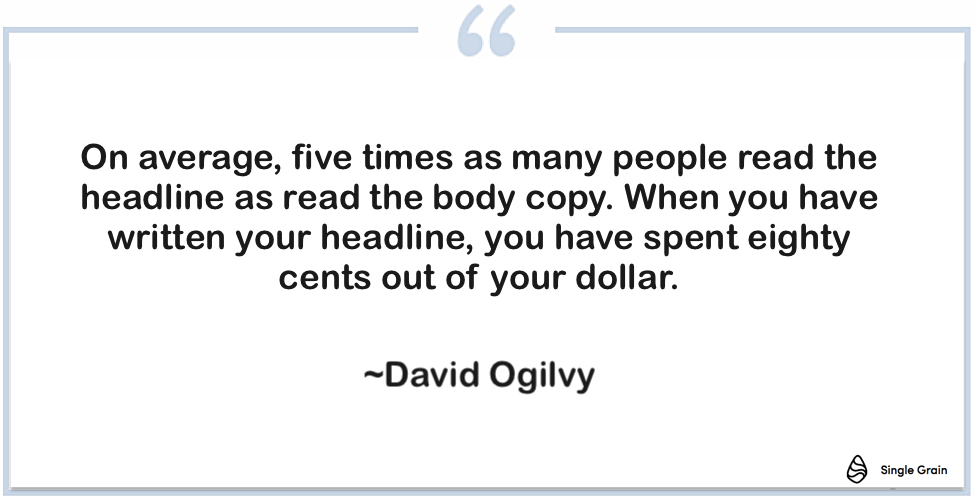
Listen to Mr. Ogilvy. He was Don Draper before Don Draper was even a thing.
A strong headline is attention-grabbing, informative, and makes you want to click it to read the full article. It shouldn’t be boring or vague, and should definitely not include info you don't actually address in the body of your post (i.e. clickbait):
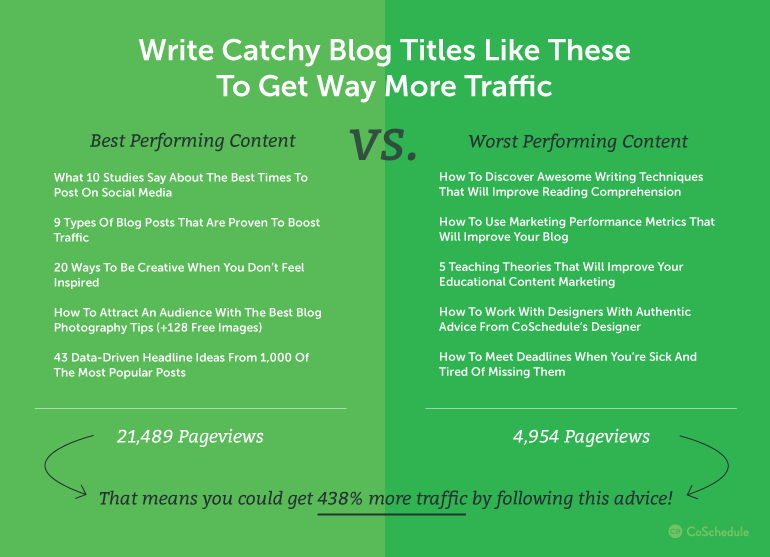
To make your headlines more compelling, try a few of these quick tips:
- Numbers: People love lists and listicles, so include numbers and facts (12 Ways to Include Numbers in Your Blog Post Headlines)
- The 5 Ws: Titles that begin with the famous five Ws – Who, What, When, Where, Why + How – let the reader know that they are going to learn something (How to Write Blog Titles that Make People Click)
- Length: Limit your headline to about 55 characters (or else suffer the red bar from WordPress), as Google tends to cut off any titles longer than 50-60 characters.


- Keywords: Use your keyword(s) near the beginning of the headline, as long as it makes sense. (Why Keyword-Optimized Titles Get the Best Results)
- Formula: If your strength is not in writing click-worthy titles, don't be shy to use a headline formula or template (Top [number] Formulas to [verb] the Best Titles that Make People [emotion])
- Actions/Emotions: Speaking of which, opt for a good mix of action words and emotional appeals to give your headline energy. (6 Lies Bloggers Will Tell You to Get You to Click)
Check out CoSchedule’s Headline Analyzer for suggestions to improve any headline quickly:

Too many writers or marketers use the first headline that comes to them. It shouldn’t be an afterthought. Your headline is pivotal to blog success. For example, which headline is better?
- Get More Traffic for Your Blog (meh)
- 7 Easy Tips for Instant Blog Superstardom (wow!)
Give them an exciting reason to stick with you.
Learn More: How to Write Hero Headlines to Skyrocket Click-Through Rates
2) The Introduction
The job of the headline is to get people to click on your post – but you’re not in the clear just because you got the click. You need to have an introduction that is enticing enough to get them to keep reading.
A great introduction should build on the headline and let the reader know exactly what to expect by illustrating what the benefit is to them (why should they spend their precious time reading it?). Check that your intro gets to the point without too much preamble or beating around the bush. You don’t need five paragraphs of build-up.
A good article intro is like a good ad: simple, connects with the reader, and has a clear benefit/CTA.
Click To Tweet
According to Neil Patel, the best introductions have three parts:
- The Hook: This is the first sentence or two that should grab the reader and pull them in, and is often a question, controversial statement or awe-inspiring statistic to arouse curiosity:
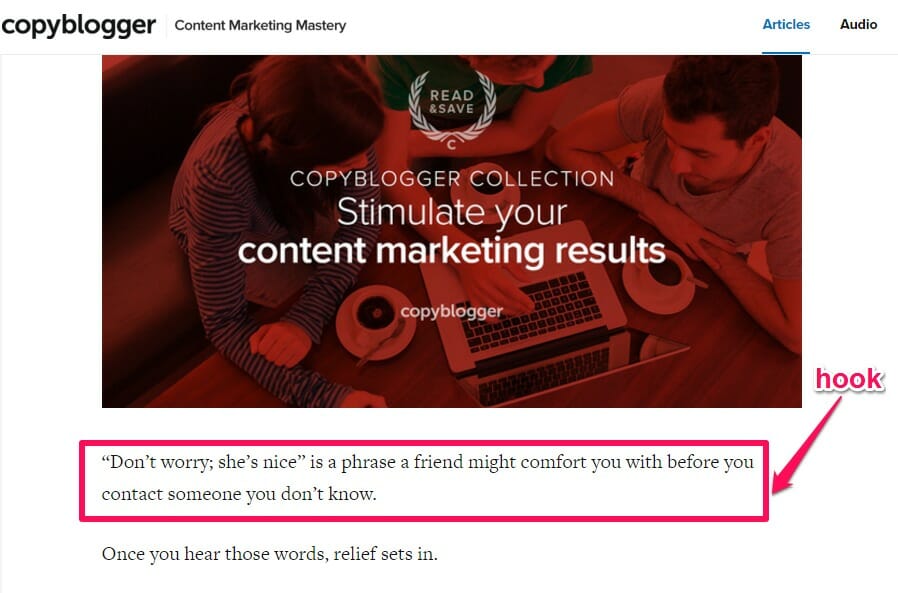
- The Transition: This sentence connects the headline and body and further excites the reader to keep going:
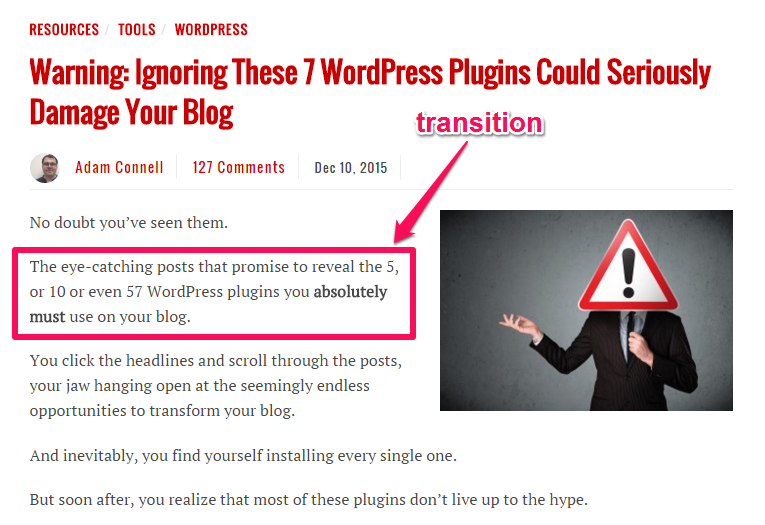
- The Thesis: This explicitly states the benefit that the reader will get from reading the post in its entirety – what it's about and why they should care:
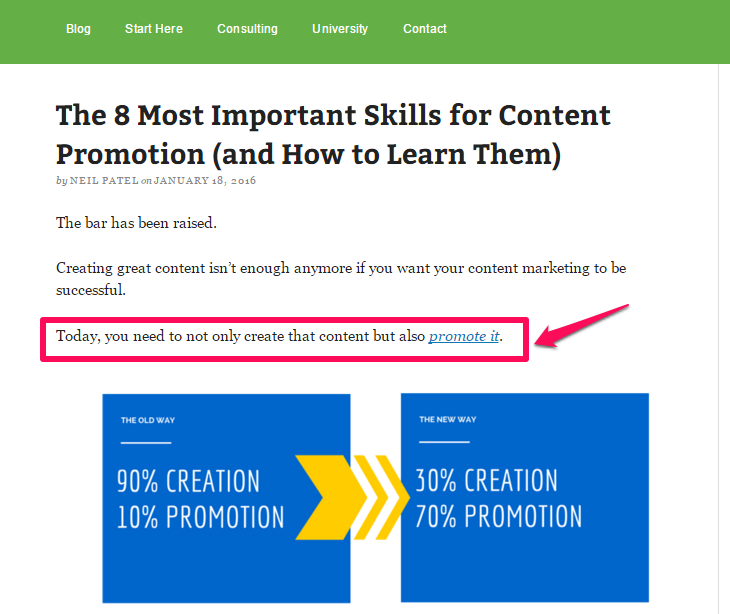
3) The Visuals
Let’s just state the obvious: You need high-quality and engaging visuals for your blog.
Visuals – images, screenshots, infographics, GIFs, videos, graphs, charts – increase click-throughs, shares and engagement, to say nothing of the fact that we process visual information 60,000 times faster (yes, you read that right!) than text:

The proof:
- Infographics are shared 3x more than any other content on social media.
- Posts with images get 94% more views.
- We remember 65% of what we see visually, but only about 10% of what we read.
- Posts with colorful visuals make people 80% more willing to read it.
This blog post from HubSpot goes super meta, featuring infographics in their blog post about how to create infographics:
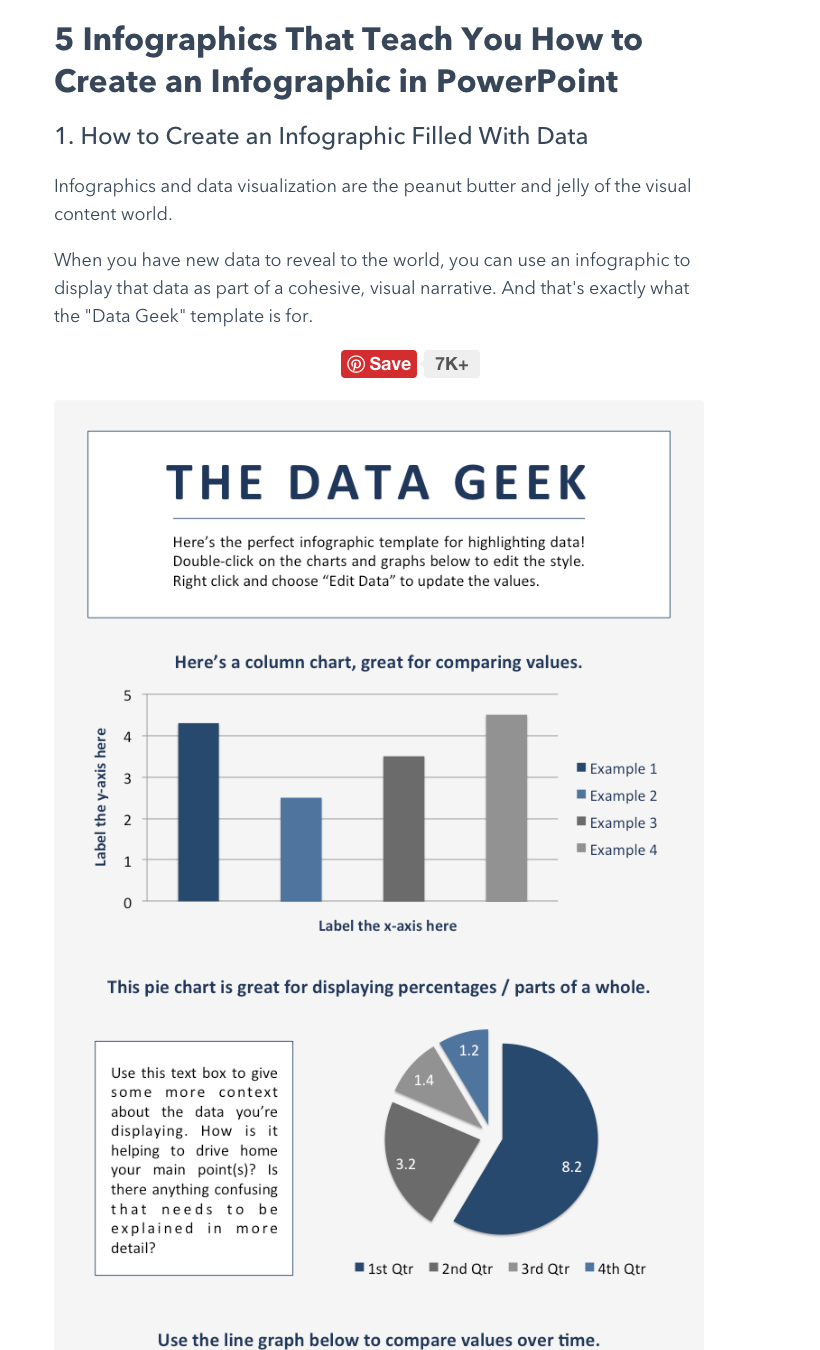
When it comes to the images on your page, there are a few best practices to keep in mind:
- Use high-quality images that are relevant to the content, not just random stock photos.
- Compress images with a tool like TinyPNG for faster load times and less data consumption.
- Consider adding a relevant caption under each image, as people read them 300% more than the body text itself.
Ask yourself: Does each blog post contain one or more (depending on the length of the post) high-quality and relevant image? Have you used a variety of images, screenshots and charts? If not, consider adding them.
You should definitely have an interesting header image, plus multiple supporting images, screenshots or even videos in the blog post to increase engagement.
Click To Tweet
Finally, and perhaps most importantly, ensure that you have permission to use the images and videos. If you have an account with a photo service such as Shutter or 123RF, they'll state on each photo how you can legally use them.
Learn More: Overlooked SEO: Optimizing Images and Video for Search
4) The Format
Stand back and look at the post as a whole. Is it scannable? Does it look good (this may be partially subjective, but answer truthfully)?
You want a post that’s easy to navigate and consume for your readers, and that means using headers to break it up into sections (and subheadings to further break down large sections), bulleted and numbered lists to neatly group info, bold/italics/underlines for important words and phrases, and a good text-to-image ratio (try and include at least one high-quality and relevant image for every 500 words).
Your headers and subheadings should make it clear what each section is about and give a decent summary of the post itself if viewed together, and they’re also important for when the search engines establish context.
Headers help the crawlers get a handle on everything, so use the H2 tag for main headers and the H3 or H4 tags for subheadings within each section (if needed). Ideally, each section won’t contain more than around 300 words for readability purposes. Readability will keep your users engaged and it may be factored in by search engines.
Keep paragraphs fairly short – no longer than 3-4 average-length sentences – and use a variety of sentence lengths for flow.
5) The Overall Quality
If you want your content to be taken seriously as a professional writer or marketer, then make no mistake (literally) – spelling and grammar matter.
Click To Tweet
Always proofread your writing and, when in doubt, take note that there are multiple tools that can help with this. It can be difficult, after all, to catch your own mistakes or spot awkward phrasing immediately after writing the content yourself.
Some of the best tools for this purpose include:
- Hemingway – a free editor that will help you use correct grammar and syntax while offering suggestions to both simplify and strengthen your sentences.
- SEMrush’s SEO Writing Assistant – which can improve your writing and give you suggestions about how to improve its potential SEO rating.
- Grammarly – a mostly free proofreading tool (you have to upgrade tp premium for full features). I do prefer the other two much more, as Grammarly will sometimes hit you for language that isn’t even incorrect.
Explain what you’re detailing in your post, elaborating on why it matters and how the information is valuable to your audience. Make sure that any tutorials have clear, easy-to-follow steps, and always outlink to other resources if needed to give readers the full picture.
Learn More: 4 Ways to Signal to Google that You’re an Expert Content Creator
6) The Statistics
When you’re writing content, you want people to trust you and, unfortunately, we’re living in an era where less-than-reliable information is being spread online. Because of this, statistics can help you back up your claims while bringing in a third party to validate them. People like to see the evidence behind your advice and opinions.
Make sure your stats are current and pertinent to your point. Anything older than 1-3 years, depending on the topic, is likely outdated. This will depend on the field; quotes from quickly advancing industries like the tech or medical field, for example, should be as recent as possible.
You can find more up-to-date data using the Search Tools > Any Time > Past Year command on Google:
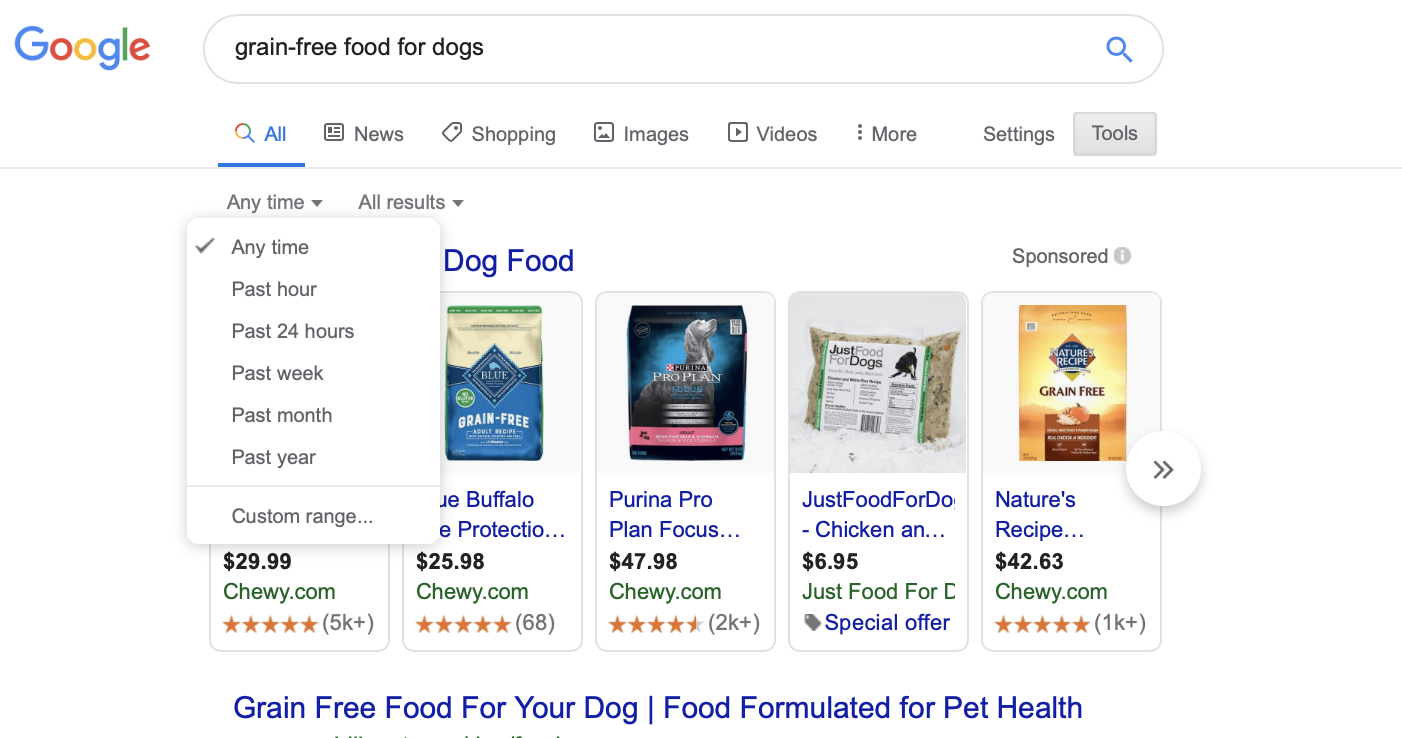
And make sure that if you find a quote from a curated list of statistics, you check the original source for any caveats, exceptions, explanations and, of course, the original date.
7) The Conclusion and CTA
Unless you're just blogging for fun, remember that businesses typically rely on their blogs to accomplish some sort of specific marketing goal. If you aren’t properly optimizing each blog post to reach said goal, you’re guaranteed to be underwhelmed.
This is where a call to action (CTA) comes in. At the end of your post, you should always include some sort of CTA to drive users to take whatever action it is that you’re focused on. It will significantly increase the likelihood that they do.
A good CTA might encourage users to:
- read a related post (provide the link)
- leave a comment about some aspect of what you covered
- sign up for your e-mail list (give them a compelling reason to do so)
- answer a question you’ve asked
- download your e-book
- share the post on their social media accounts
- like the post
- sign up for a free trial
- purchase or try something that you’ve discussed in the post
It all depends on your particular goal for writing the piece, but ultimately, it’s about extending the engagement and driving meaningful results. Get them to do something.
Learn More: How to Create CTAs that Actually Cause Action
8) The Length of the Post
Once you’ve gone through the piece from top to bottom, consider the length of it. While there’s no magic word count for a blog, remember that it’s difficult to say anything substantive on any topic in fewer than 500 words.
In many cases, 500 words just doesn’t cut it for most subjects with any nuance or technical details involved. If you want your posts to be actionable enough that they set you apart as an industry leader and that they’re valuable to your audience, you’ll need at least 1,000 words or more.
In addition to that, the shorter your posts are, the less opportunity you have to get your content indexed for particular keywords within the SERPs. Fewer than 300 words and you’re probably going to be ignored.
A healthy mix in length is your best bet. Quick posts will be appreciated by your readers because they can read them in a short period of time, and longer posts will deliver the biggest organic SEO bang for your buck.
Recent studies from HubSpot have found that 2,100 words is the sweet spot for blog posts when it comes to writing engaging, valuable content that will do well in search and by appreciated by readers. To be safe, you can shoot for a word count range of 2,000-2,500.
When you’re deciding how long you want each post to be, keep search intent in mind. Someone who wants to know “when is daylight savings time” may not be interested in a full-length, 2,000-word article about the history of daylight savings time; they’re just looking for a quick answer.
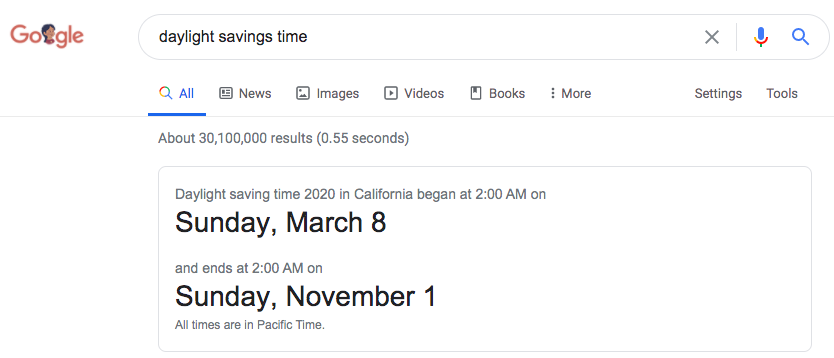
Base your article length and your interpretation of the search intent on the keywords you’re targeting.
Learn More: Do You Really Need to Write 1,890-Word Blog Posts to Rank on Page 1?
9) The Breadth of Topics
People read blog posts to learn something or help them solve their own problems. Whatever you’re writing, you need to make sure that you address the pain point, questions and concerns that your audience has around that topic. For the best results and to reach as many members of your audience as possible, this will mean having a wide range of topics that still appeal to your niche.
You can ask your audience questions through your e-mail list or with a tool like Qualaroo to display survey questions in order to ask them what their biggest challenges are around the subject that you want to write about:
While the specific niche you’ve chosen for your blog may influence how wide of a range you’ll be able to cover, look for any missing holes or unanswered questions that arise from past blog posts. Chances are if you’ve stumbled across any gaping holes missing from your breadth of topics, your visitors will have noticed these omissions as well.
Use a tool like BuzzSumo to find popular content from your competition – and then use the Skyscraper Technique to really improve it:
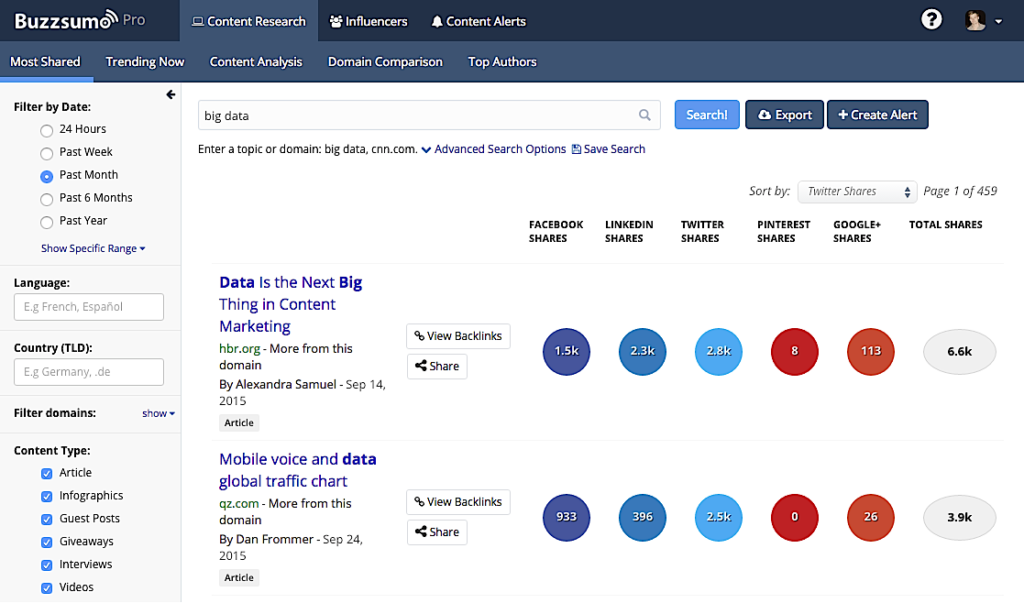
The Skyscraper Technique has you look at the top-performing content on a particular subject, and then creating something even better. Better could mean:
- adding more information that your audience would benefit from
- including new research or statistics
- providing more details about action steps, explanations or best practices
In short, you want your content to be more valuable than your competitors' content.
Take it a step further and consider which posts worked best, which were shared the most, and which ones resonated with your audience. Google Analytics can give you a detailed breakdown. You may want to revisit and expand on those topics.
Learn More: The Skyscraper Technique: How to Build High-Quality Backlinks to Your Content
Visitor Connections
Of course, unless you’re writing for yourself, improving the quality of your content is only part of the battle. As blogging is an inherently social medium, it’s also important that you provide your readers with the tools necessary to share your content with the world.
Here’s what to look for when conducting your own blog post audit:
1) Social Media Icons
Every page on your site should have links to your social networking profiles to encourage readers to connect with you on these platforms. For maximum visibility, most blog owners include these icons in their blog sidebars or footers:
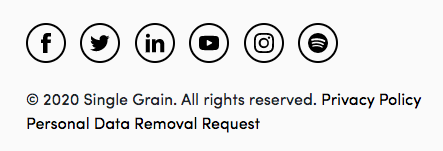
CMS platforms like WordPress make this easy. You can use a plugin like:
Or go the extra mile and find a custom icon set that reflects your blog color scheme and style at:
2) Social Sharing Tools
In addition to encouraging readers to connect with your brand on social networking sites, it’s even more beneficial to get them to share your content on their own profiles (since this is what typically causes articles to go viral).
To do this, you’ll need to have social sharing tools (for example, the WordPress plugins Digg Digg or Shareaholic) installed on every single post-level page on your site.
A floating icon bar stays with the reader for easy sharing, but in some cases this can be annoying to users, especially if there’s a glitch and it somehow ends up blocking too much of the text.
Social share bars at the top and bottom of each posts may be preferable:
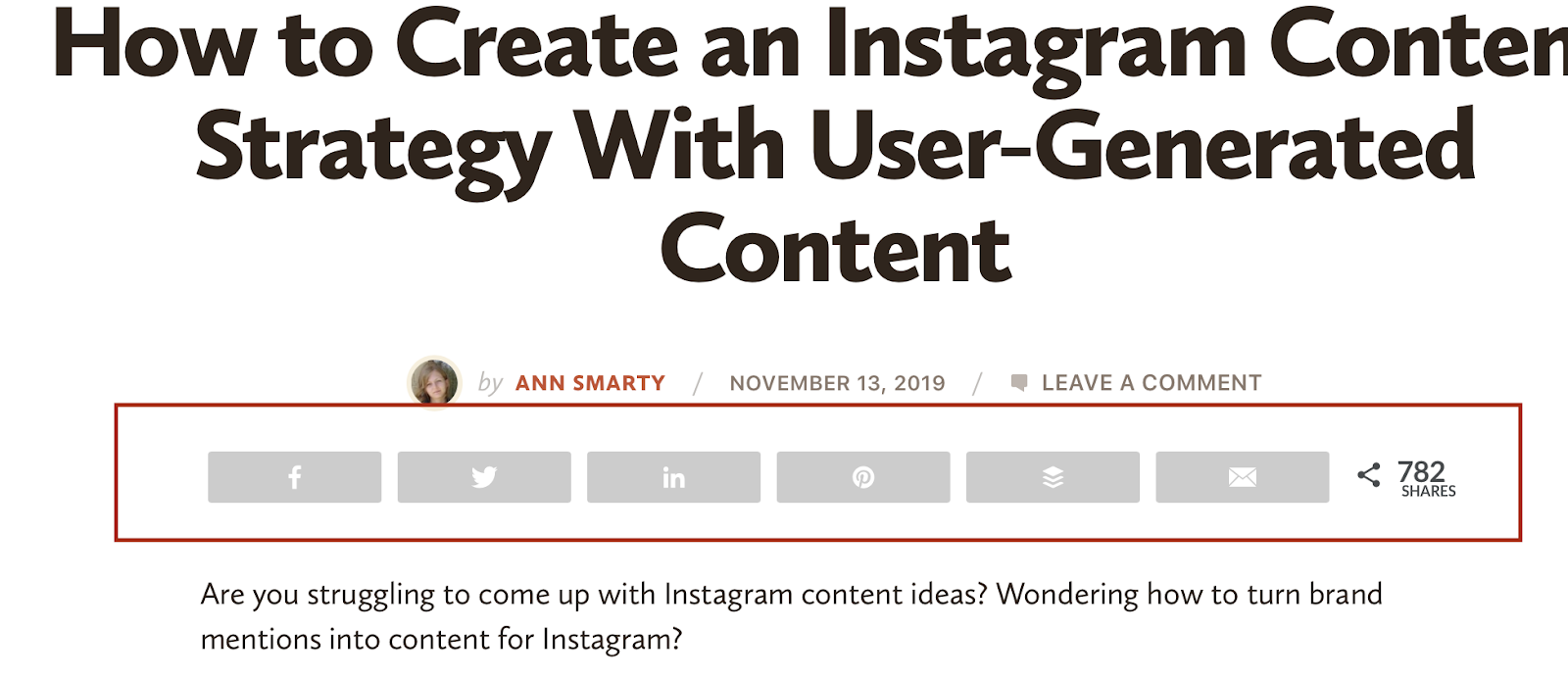
Allowing your readers to easily share content can increase the likelihood that your content will spread virally. In fact, according to HubSpot:
Using social sharing can lead to 7x more mentions.
To further increase your chances of scoring that valuable share, you might consider offering a content upgrade in exchange for a reader sharing your post with their network. Tools like Pay with a Tweet (which works with all the major platforms, not just Twitter) reward those who share with something extra and exclusive, like a template, resource list, e-book, checklist or white paper mentioned in the post.
3) Email Subscriptions
Finally, keep in mind that not all your visitors will be active on social networking sites, so make sure that an e-mail opt-in is clearly advertised to give these readers additional opportunities to follow your blog:

A pop-up box can be an effective way to grab visitor details, and you can set it to appear when they arrive on a page, after X number of minutes, or after scrolling down X% of the page (the last two of which indicate clear interest in whatever it is you’re writing about).
And while people claim to hate these pop-up boxes, they’re marvelously powerful tools:
- The very best pop-ups average a 9%+ conversion rate
- Entrepreneur’s pop-ups increased subscriptions by 86%
- Yoast added 10,000 subscribers in a month by including pop-ups
Two free tools to try out include:
- SumoMe’s Welcome Mat (whole page pop-up)
- Scroll Box (less intrusive slide-in box)
A simple way to do this is to present your opt-in copy above the fold with an incentive, like Noah Kagan does on his site, OKDork:

In addition to displaying forms prominently on your site, be sure that the benefit of subscribing is clearly advertised to encourage signups. People love a little social proof, so if you have a lot of subscribers already, highlight that number.
Learn More: How Correctly Used Pop-Ups Can Help Increase Leads
Site Structure
Part of what makes blogging so challenging is that, in addition to making your site as engaging as possible to readers, it must be appealing to the search engines in order to generate a steady stream of natural search traffic.
Any good blog post audit should include a look at your site’s structure, as well as the identification of any issues that could be preventing it from being indexed correctly by the engine spiders.
1) Permalink
For maximum keyword exposure, ensure that the permalink structure you’ve chosen for your blog incorporates your post title in some way. This is better for your readers and the engines.
The default style in WordPress includes a lot of random numbers but no title, so click on the “Edit” button and change the permalink to the title of the post:

2) Post SEO
WordPress and other blogging platforms make post optimization (SEO) a snap with handy plugins like:
However, these plugins only work if you use them correctly, so make sure that you’ve installed and optimized them for each post on your site for best results.
The Yoast SEO plugin for WordPress gives you a green, amber or red light (or smiley face), as well as a readability and SEO score, plus the analysis results and suggestions so you can see where you need improvement:


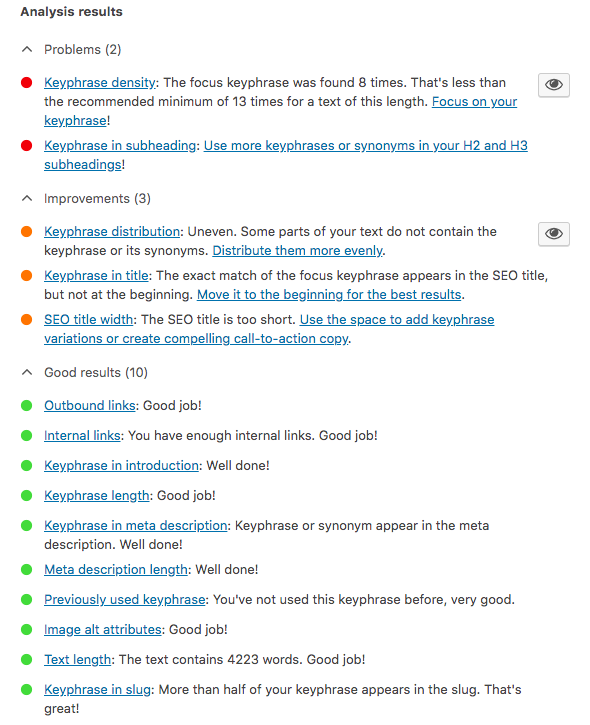
3) Category Page Optimization
When readers choose to delve into your past blog posts, they’ll likely do so by examining your category archives (collected by related topic) instead of reading past articles by date.
For this reason, it’s a good idea to ensure that your category pages are optimized for both readers and search engines to improve your overall SEO.
Categories can be added in a number of different CMS platforms, including WordPress. It’s best to assign each post to a single broad category so that users can easily browse topics they’re interested in.
You can then use optional tags to specify individual elements about the post. For example, if your brand writes about video creation, you might have topics like “Video Ad Industry,” “Video Marketing” and “Video SEO.” They’re specific enough to help your audience navigate accordingly.
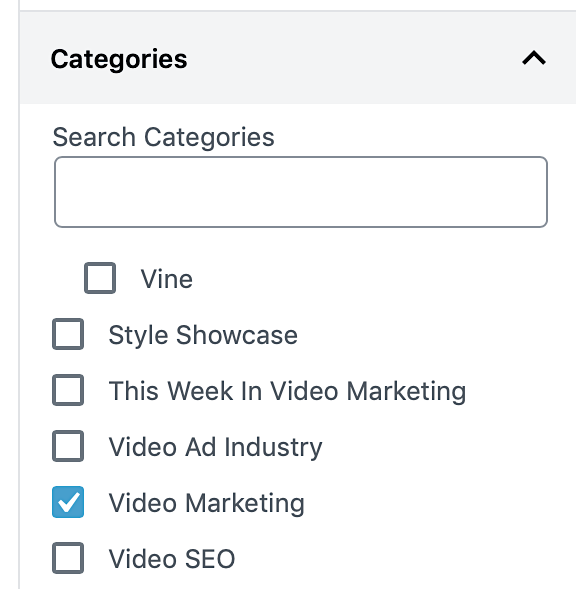
Learn More: How Correctly Used Pop-Ups Can Help Increase Leads
4) Search Engine Accessibility
Because WordPress relies heavily on scripts to function, it’s important to make sure the presence of these code snippets isn’t preventing the search engines from indexing your content correctly.
To learn more about accessibility for both readers and search engines alike, read this well-written post from Moz:
“Do you know anyone who is visually impaired? Maybe they have low vision or color blindness, or are fully blind. Think about how they use the Internet. Close your eyes, or at least squint really hard, and try to find today’s news or interact with your friends on Facebook. It’s a challenge many of us don't think about every day, but some of what we do in SEO can affect the experience that people with visual impairments have when visiting a page.”
Here are some elements in which SEO and accessibility can overlap:
- Video transcription
- Image captioning
- Image alt attributes
- Title tags
- Header tags (H1, H2, etc)
- Link anchor text
- On-site sitemaps, table of contents, and/or breadcrumbs
- Content ordering
- Size and color contrast of text
- Semantic HTML
On the Single Grain site, we have an accessibility widget to help folks out. When you click on it, these options open up:
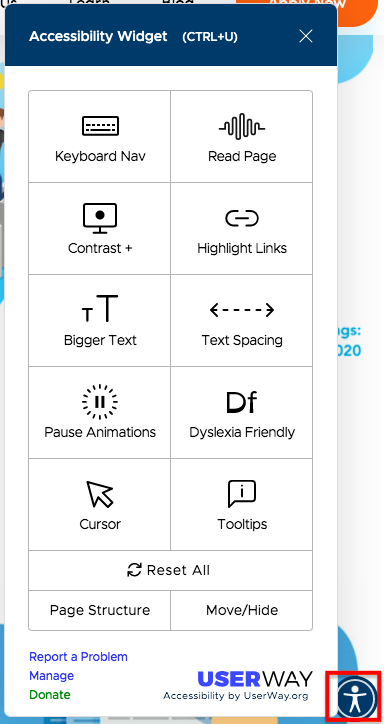
5) Meta Description
The short paragraph that appears under the title of your post in the SERPs is your meta description, and it tells readers and searchers exactly what the post is about:

The meta description is like the blurb on the back of a book or a DVD, and you should absolutely always add one; it gives you a chance to capture interest and show that your post is delivering on search intent.
Each post should have its own unique description included in the <head> section of the HTML. A plugin like Yoast SEO has a convenient section labeled “Meta Description”:
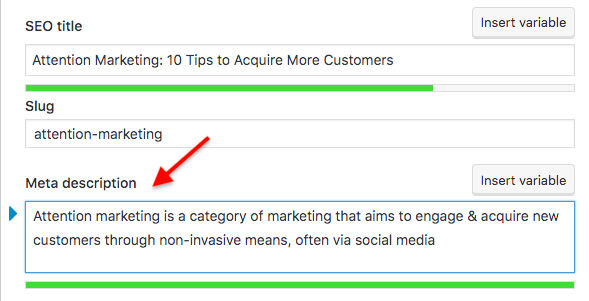
Use it. Include your targeted keyword and keep it to 160 characters or less to avoid it getting cut off when displayed.
6) Title Tag
When you hover the cursor over an open tab on your browser, you see the name of the page. That’s your title tag. It may be the same as the post headline, but it doesn’t have to be.
You can change the title tag for your website in WordPress under Settings > Site Title and include the optional Tagline if you wish, as well as for individual pages on the page dashboard under title (or SEO title using a plugin like Yoast).
Keep it short (60 characters or less), include the keyword, and make it relevant. The title tag is a ranking factor for your SEO, so make it count.
7) Alt Text for Images
When you add an image to your blog post, one of the available fields is the “alternative text” field, or “alt-text”:
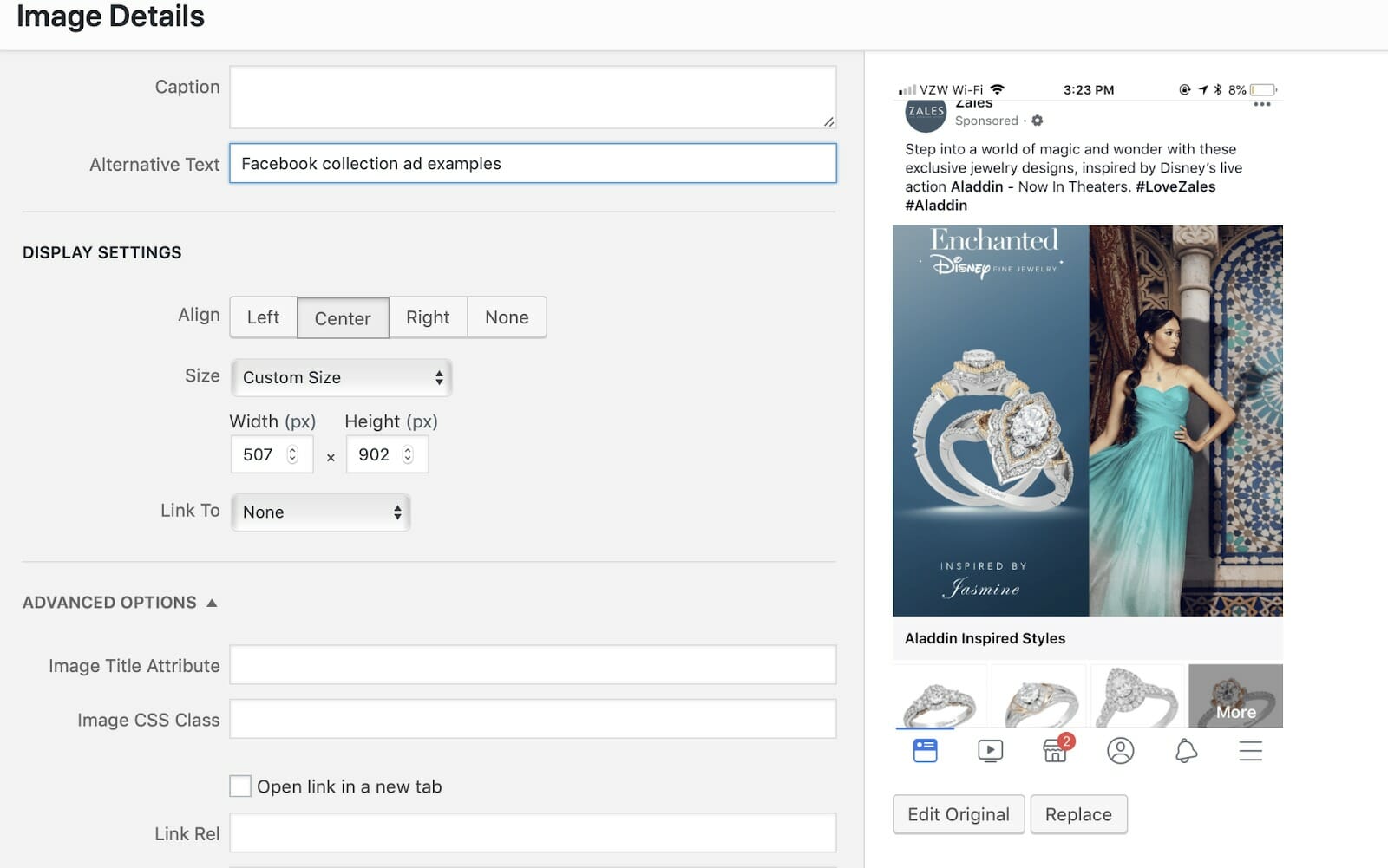
This will be displayed if the image doesn’t load or if users are relying on a screen reader to help them access content if they have low sight. Accessibility is crucial to consider, especially considering that ADA-related lawsuits have been increasing quickly over the past five years.
Alt-text also gives search engines more to go on when determining what your post is all about. Search engines can’t actually understand what an image is just by scanning it, but they can take those text clues in the description to show the image in relevant visual searches.
Long story short: It’s good for SEO, and it’s good for accessibility, so take a few seconds to fill out the alt-text field every time you upload an image and optimize your images and video.
Metrics Tracking
Finally, when conducting your blog post audit, keep in mind that blog posts should be treated like any other web property when it comes to metrics. If something isn’t being measured, it isn’t being managed, so use your audit to ensure that all of the following areas are addressed:
1) Monetization Strategies Offered
Take a look at the different monetization strategies being used and ask yourself the following questions:
- Are my chosen monetization strategies a good fit for my audience?
- Are my monetization elements featured prominently or are they buried in content?
- Do my monetization elements provide demonstrated value for my users?
Your monetization strategy should work for your audience. It might be affiliate marketing (which allows you to earn a profit when someone converts from an affiliate link you share), it might be online courses that build your reputation, or it might be original e-books and other resources.
Becoming a publisher for the Google Display Ad network can also be profitable, though you’ll generate the most revenue in specific niches.
Learn More: 7 Steps to Getting Started With Affiliate Marketing for Your Business
2) Goal and Funnel Setup
As with traditional websites, blog owners should have explicit website goals that are being measured with web analytics goals and funnels.
If these important tracking features aren’t present on your site, add them as soon as possible in order to improve the effectiveness and results of your blog.
You can create Google Analytics goals on the Admin tab, in the View column:
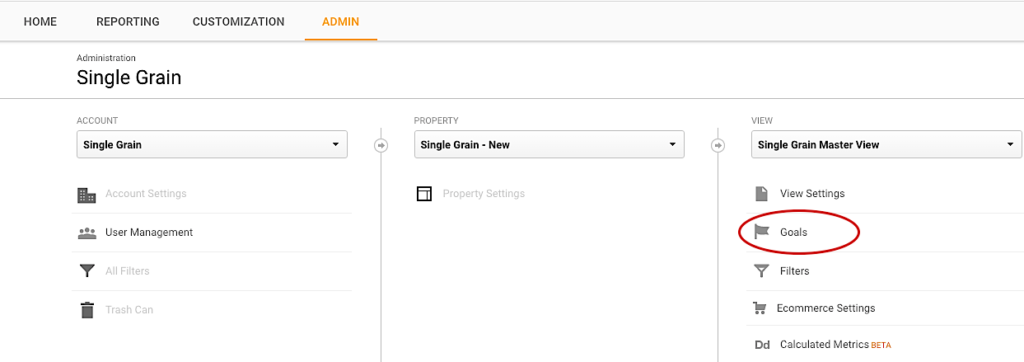
Click on the red +New Goal button, select a template or custom goal, and a destination, duration, pages/screens per session, or event as the goal type:
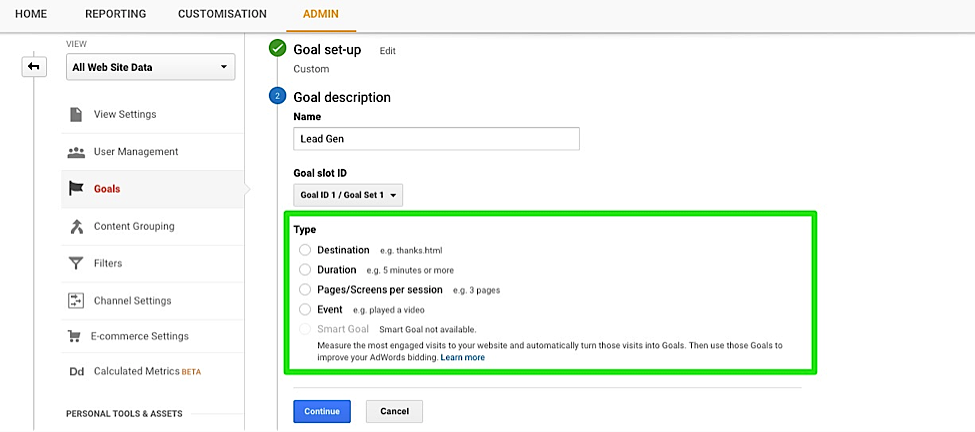
If you select “Destination” as the goal type, you’ll be presented with the option to create a multi-step funnel in the next step (this is a very good thing):
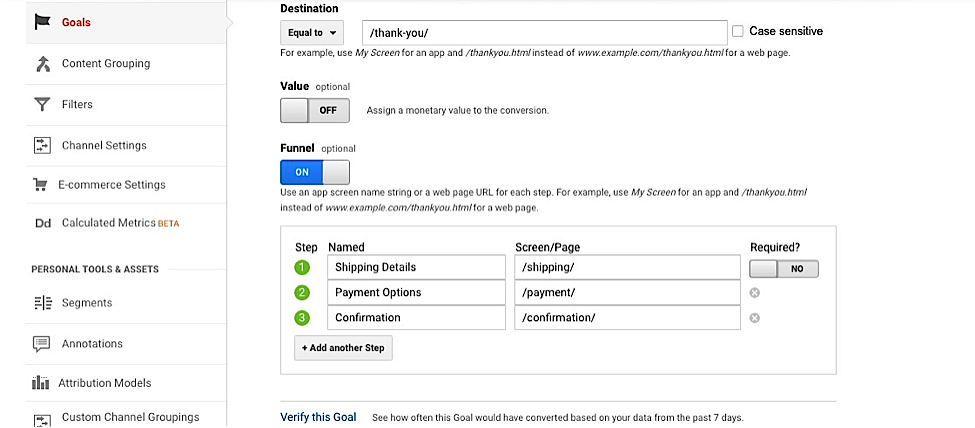
Once created, your funnel can show you exactly where customers are leaving, where there’s a bottleneck, and where you need to improve the customer UX.
You want to gently walk them from Point A to Point B (whatever action you want them to take). If they’re disappearing before then, you need to know where so that you can determine why, and then fix the problem.
Learn More: Google Analytics for Content Marketing: How to Track and Improve Your ROI
3) Gather Feedback
A great way of knowing whether your content is being well received by your audience or not is the simplest of all: just ask them.
By using a tool like Intercom, you can start real-time chat conversations with readers as they’re engaging with a post:
For example, when reading a post on our site, users will see a message that asks them which marketing topics they’re most interested in learning about. When they answer, this gives us a better sense of what kind of marketing content to create in the future.
You can also use tools like SurveyMonkey to collect reader feedback, ask questions of your followers and fans on social media, or send a quick follow-up e-mail to those who purchase or sign up on your website:
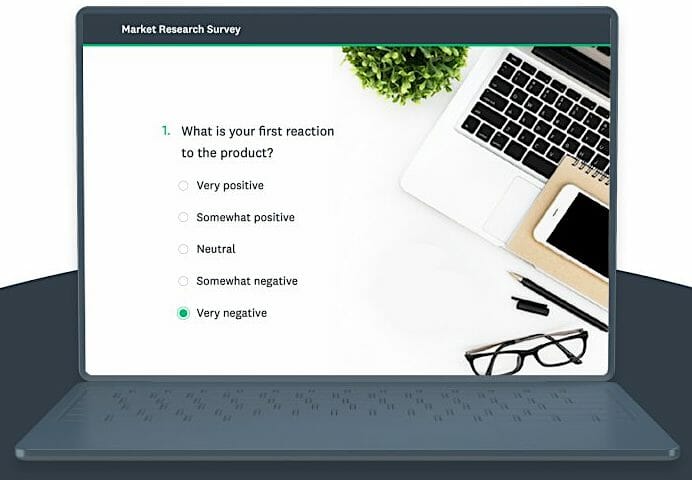
Ask, and ye shall receive. Most people are more than willing to share their opinions.
4) Split Testing
Split testing (running different website versions against one another to determine which combinations of factors give the best results) is a vital website development task.
Although setting up split tests on blogs can be more challenging than on static websites, services like Optimizely and WordPress plugins like Nelio AB Testing exist that can take the pain out of the process.
You can dive even deeper by doing A/B SEO testing, which allows you to run experiments in order to determine the optimization tweaks you need to make.
The benefits of running SEO tests on your website include:
- Achieve a higher conversion rate and convert more visitors into buyers
- Improve the effectiveness of your content marketing strategy, which leads to lower bounce rates and higher dwell time
- Maximize your ad spend and minimize cart abandonment
- Test every element, like images, text, links, CTA, colors, videos, menu, etc.
- Instead of running a separate customer feedback campaign to understand what people like the most, you run SEO tests and identify the elements that receive the maximum customer engagement
- Understand what changes resonate best with your audience and keeps them engaged
- Avoid mistakes that could otherwise tie up your resources for minimum or negative gain
- Stay up-to-date with the latest consumer trends and quickly adapt to changes, which leads to an increase in engagement
An easy way to run A/B SEO tests for specific blog posts on your site is with a tool like ClickFlow (full disclosure: this is our tool). Whereas other, similar tools let you A/B test your website or landing page or call-to-action, ClickFlow enables you to A/B test your SEO elements.
ClickFlow syncs up with Google Search Console and helps you do things that GSC cannot do from an SEO perspective, such as improving the click-through rate of a page by testing keyword changes or meta descriptions or titles.
With a concrete A/B testing strategy, you can incrementally improve everything about your blog. A different headline here, a specific color there, a more relevant CTA button, and your blog takes off like you wouldn’t believe.
Learn More:
* Why You Should Run SEO Tests
* How to Decide What SEO Tests to Run
* What Is A/B SEO Testing?
A Successful Blog Post Audit
Blog post audits won’t be the most fun part of creating and running marketing campaigns, but they are essential to your success.
A thorough blog post audit can clue you in to the changes, subtle and massive, necessary to drive significant results.
For best results, we recommend conducting blog post audits regularly, at least once every six months. As you’re doing so, double check for any new best practices, including those that may be influenced by changes in search algorithms. Being successful in marketing requires some degree of agility and adaptability, and that goes for content, too.
The post How (and Why) to Conduct an Effective Blog Post Audit appeared first on Single Grain.
from Single Grain https://ift.tt/2eOPnMQ




No comments:
Post a Comment